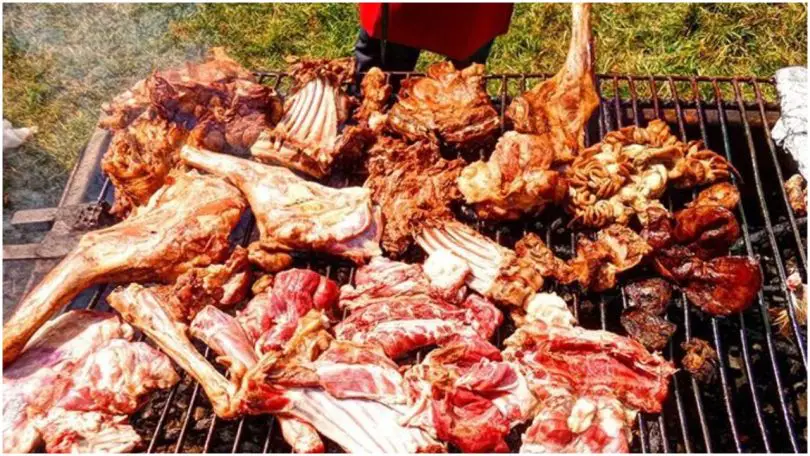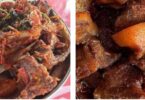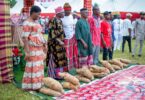Maasai food culture is intriguing. If you had to try it for the first time, there are chances you may opt to stay hungry.
Kenya and northern Tanzania are home to the Maasai, a pastoralist group that live in those two countries. In their traditional diet, they eat nearly nothing but dairy products, meats, and other animal products.
Culturally, they take raw milk mixed with animal blood. Besides, two-thirds of their daily caloric intake comes from fat and they have cholesterol intakes ranging from 600 to 2000 milligrams.
However, even though the Maasai food culture is heavy in fat and cholesterol, they have a low incidence of ailments commonly associated with such diets.
They have low blood pressure, low total cholesterol, low cholesterol gallstones, and low rates of coronary artery disease, such as atherosclerosis, all of which are associated with a healthy lifestyle.
Table of Contents
What Foods Do the Maasai Eat?

Maasai food culture. Meat roasting is ongoing. Photo/YouTube
The Maasai food culture features six major foods. They are honey, meat, milk, tree barks, fat and blood.
This is why animals are an integral part of the Maasai people.
As the traditional Maasai diet, milk is an important part of nearly every meal. They consume it while fresh, curdled or with tea.
Sometimes, it is made as butter, which is used to nourish children during their growth period.
The Maasai food culture highlight is their signature mixture of milk and bovine blood.
The blood is usually collected by making an incision in a cow’s jugular artery with surgical precision. You then extract a reasonable amount of blood without killing the animal; the wound heals in a few days.
For ceremonial purposes, blood mixed with milk is offered to persons who are ill to help them recover.
It is also common to ferment milk mixed with blood. This is accomplished by placing the milk in hollowed-out pumpkins that act as “fermentation chambers”.
The milk’s high daytime temperatures thicken it, and curdle into an amber-coloured yoghurt.
Ugali, (a white corn-based meal), is a common accompaniment to boiling or coagulated blood in soups and stews, where it is used as a thickener.
What Do the Maasai Eat For Dinner?
The wealth of a Maasai man is determined by the number of cattle he owns, so meat is always available. It is safe to say that meat is the epitome of the Maasai food culture.
The slaughtering and skinning of an animal are bloody processes, but in Maasai cultures they are regarded as blessings. When an animal is slaughtered, the blood is collected and given as a drink to a moran chosen among the clan.

Maasai extracting blood from a live cow. Photo/YouTube
And, the heart is squeezed and the blood is poured into a glass which is later offered to the young warrior.
Men eat the nicest portions of goat, or cow meat together in a hut, while women and children eat separately. They mostly settle for inferior cuts.
The liver and kidneys are the most sensitive sections of the animal, thus these are the parts that the elderly like.
Do The Maasai Eat Vegetables?
There has been a significant evolution in the Maasai food culture with tubers, honey, and vegetables now making up a significant portion of their diet.
Soups and stews are often made with vegetables. The roots and bark of Nilotic Acacia are boiled, and what is left is either drank on its own or put to a variety of Maasai soups.
It has a bitter taste, but its therapeutic powers make up for it. For example, it is used to cure skin injuries and treat dysentery.
What is the Maasai Culture Most Known For?
Besides the signature Maasai food culture, they are known for their bright red blankets and vibrant bead jewelry.
These semi-nomadic warriors are known for herding livestock and for their combat prowess.
History has it that for more than seven years, all young men were forced to live in the wilderness with nothing but a blanket and spear while they were trained to be warriors in the traditional way.
In this unusual initiation into adulthood, lions, and leopard hunting was a common practice. It was aimed at cultivating survival skills and promoting a deep connection with nature that is nearly unheard of in the developed world today.








